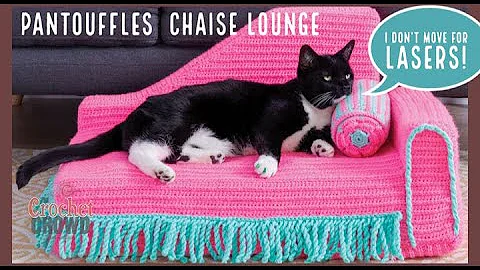Master the Whip Stitch Technique
Table of Contents
- Introduction
- Tools and materials needed
- Choosing the right yarn for seaming
- Preparing the pieces for seaming
- Aligning the pieces
- Choosing the right side for seaming
- Understanding the whip stitch technique
- Benefits of whip stitch
- How whip stitch works
- Different variations of whip stitch
- Step-by-step guide to whip stitch seaming
- Thread your tapestry needle
- Begin the first stitch
- Working through both loops
- Maintaining consistency in direction
- Finishing off the seam
- Tips and tricks for a seamless finish
- Adjusting tension
- Weaving in ends
- Blocking the project
- Hiding the seam
- Comparison with other seaming techniques
- Slip stitch seaming
- Single crochet seaming
- Decorative seaming techniques
- Conclusion
How to Whip Stitch Knit or Crochet Pieces Together
In this tutorial, I will guide you through the process of whip stitching two pieces of knit or crochet together. Whip stitch is a simple and basic seaming technique that allows you to join your pieces together quickly and easily. Whether you're working on a blanket, a garment, or any other project that requires joining, the whip stitch method can be your go-to solution.
Before we begin, let's gather the necessary tools and materials. You'll need the pieces you want to seam together, a pair of scissors, a tapestry needle, and yarn. It is recommended to use the same weight yarn that you used for your project to ensure a seamless result.
To prepare the pieces for seaming, align them with their right sides facing each other. If the pieces have different stitch counts, you can adjust the alignment to ensure they match up. Once the pieces are aligned, you can begin the whip stitch process.
The whip stitch technique involves working through two loops of each stitch on both layers of the seam. This creates a spiral-like effect that securely joins the pieces together. Start by threading your tapestry needle with a length of yarn and insert it into the first set of stitches, going through both loops. Continue this pattern, going through both loops of each stitch on both layers until you reach the end of the seam.
Maintaining consistency in the direction of your stitches will result in a neater finish. You can choose to work from the top or bottom, but it's important to stick with one direction throughout the project. Take care not to pull the stitches too tight, as it may cause the fabric to bunch up.
Once you have completed the whip stitch seaming, you can tie off the yarn and weave in the ends. If desired, you can block the project to further enhance the seamless appearance of the seam.
Compared to other seaming techniques such as slip stitch or single crochet, the whip stitch offers simplicity and speed. It may not be an invisible seam, but it provides control and durability. Additionally, whip stitch seaming allows for easy customization, as you can choose different yarn colors to create decorative effects.
In conclusion, whip stitching is a versatile and efficient method for joining knit or crochet pieces together. With basic tools and a little practice, you can achieve seamless and professionally finished projects. So grab your tapestry needle and yarn, and let's start seaming!
Highlights:
- Whip stitch is a simple and basic seaming technique for joining knit or crochet pieces together.
- Gather the necessary tools and materials, including a tapestry needle, yarn, and scissors.
- Prepare the pieces by aligning them with their right sides facing each other.
- The whip stitch technique involves working through two loops of each stitch on both layers of the seam.
- Maintain consistency in the direction of your stitches for a neater finish.
- Tie off the yarn and weave in the ends to complete the seam.
- Whip stitch offers simplicity, speed, and durability compared to other seaming techniques.
- Customize your projects by choosing different yarn colors for decorative effects.
FAQ
Q: Can I use whip stitch for both knitting and crochet projects?
A: Yes, whip stitch can be used to seam both knit and crochet pieces together.
Q: Is whip stitch an invisible seam?
A: No, whip stitch is not an invisible seam. However, it provides durability and control over the seaming.
Q: How do I adjust the tension when whip stitching?
A: It's important to not pull the stitches too tight, as it can cause the fabric to bunch up. Maintain a snug and firm tension throughout the seam.
Q: Can I use a different weight yarn for whip stitching?
A: It is recommended to use the same weight yarn that you used for your project to ensure a seamless result in the seam.
Q: Are there any decorative variations of the whip stitch?
A: Yes, there are variations of the whip stitch that can create decorative effects. Experiment with different yarn colors and stitch patterns to customize your seam.
 WHY YOU SHOULD CHOOSE BEAUTYBADY
WHY YOU SHOULD CHOOSE BEAUTYBADY







